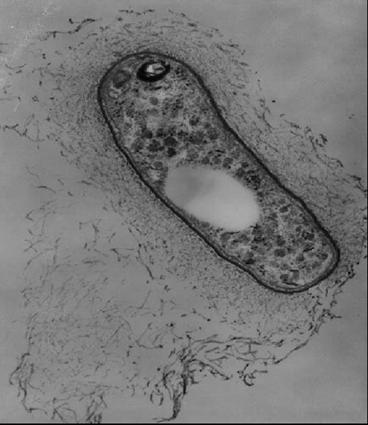Nodule bacteria are microorganisms that belong to the genus Rhizobium (literally from Greek. - "living on the roots"). They are introduced into the root system of the plant and live there. Moreover, they are not parasites, because not only bacteria, but the representative of the flora itself benefits. Such a mutually beneficial existence of organisms is called symbiosis. In this case, plants additionally receive atmospheric nitrogen, which is "caught" by microorganisms, and the bacteria themselves - carbohydrates and minerals. There is an opinion that these prokaryotes settle only in the roots of the legume family, but this is not so. There are other plants whose roots serve as the habitat for nodule prokaryotes - for example, alder, forest reedweed, etc.

Organisms of the genus Rhizobium are characterized by polymorphism, i.e., the forms of bacteria are very diverse. These microorganisms can be mobile and motionless, take the form of cocci or rods, filiform, oval. Most often, young prokaryotes have a rod-shaped form, which changes with growth and age due to the accumulation of nutrients and immobilization. In its
life cycle, a microorganism goes through several stages, which can be judged by its appearance. Initially, this is the shape of the stick, then the so-called "belted stick" (it has belts with fatty inclusions) and, finally, the bacteriode is a large motionless cell of irregular shape.
Nodule bacteria have specificity, i.e., they are able to settle only in
a specific group or species of plants. This property in microorganisms was formed genetically. Efficiency is also important - the ability to accumulate atmospheric nitrogen in sufficient quantities for its host plant. This property is not permanent and may change due to habitat conditions.
There is no consensus on how nodule bacteria get to the root, but there are a number of hypotheses about the mechanism of their penetration. So, some scientists believe that prokaryotes penetrate the root through damage to its tissues, while others talk about penetration through root hairs. There is also an auxin hypothesis - the assumption of satellite cells that help bacteria invade root cells.
The introduction itself takes place in two phases: first, infection of the root hairs, then the formation of nodules. The duration of the phases is different and depends on the specific type of plant.
The importance of bacteria that can fix nitrogen is great for agriculture, because it is these organisms that can increase productivity. A bacterial fertilizer is prepared from these microorganisms , which is used to treat legume seeds, which contributes to a more rapid infection of the roots. Different species of the moth family, even when planting on poor soils, do not require additional nitrogen fertilizers. So, 1 ha of legumes “in operation” with nodule bacteria during the year transfers 100-400 kg of nitrogen to the bound state.
Thus, nodule bacteria are symbiotic organisms that are very important not only in the life of the plant, but also in the nitrogen cycle in nature.